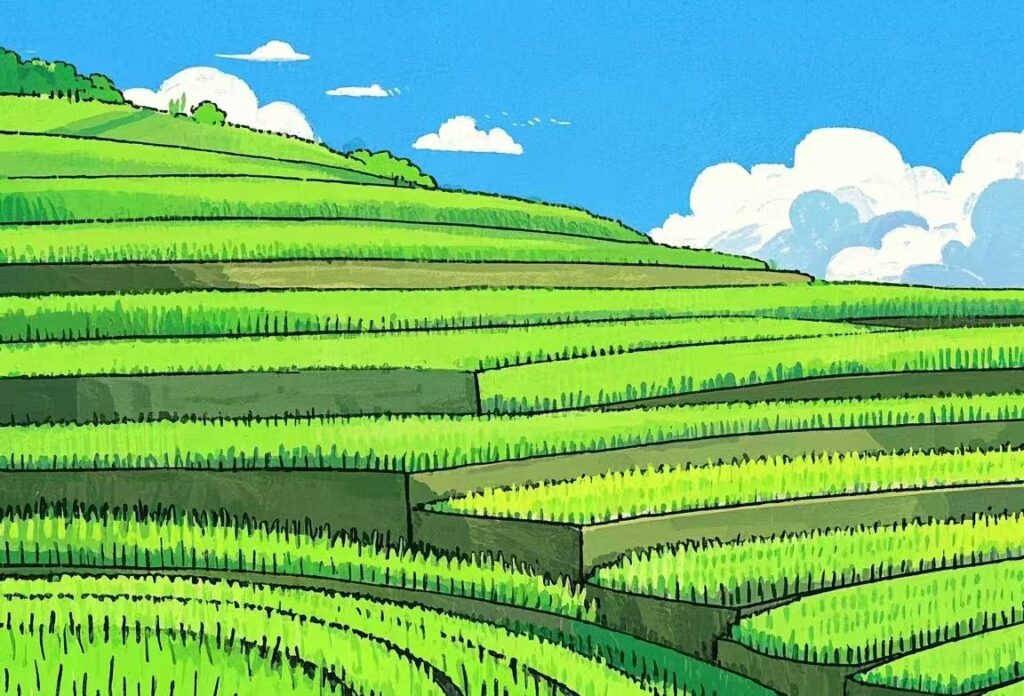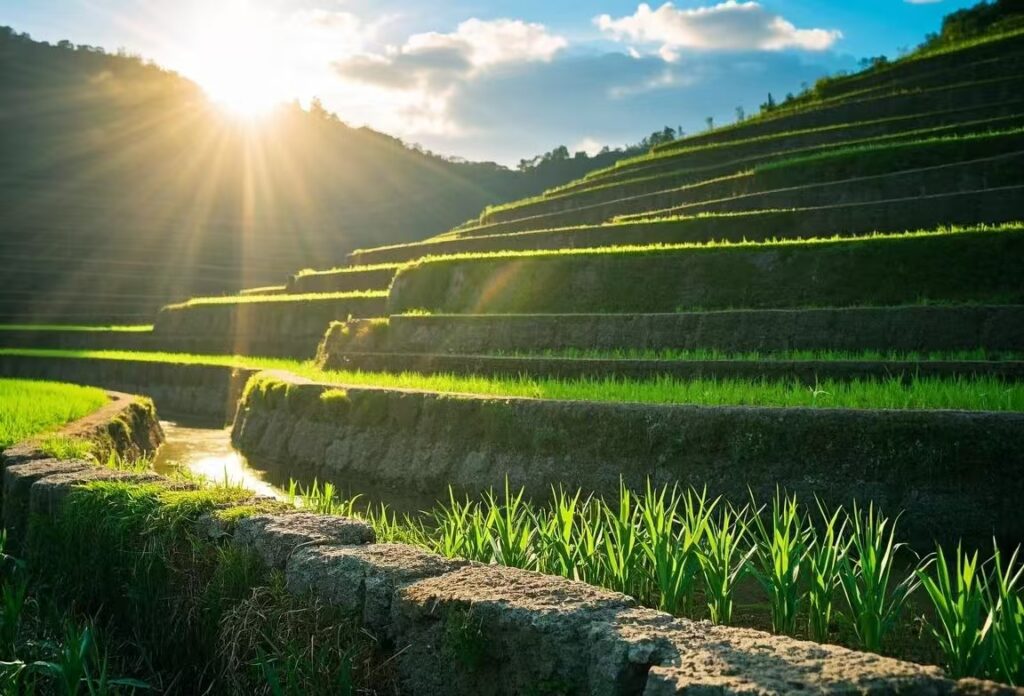When you see lush, green fields carved into the sides of mountains or elegant garden levels descending a slope, you’re looking at terracing—one of the oldest and most effective landscaping techniques. Often called stair-step landscaping, terracing transforms steep or uneven terrain into usable, beautiful spaces.
What Is Terracing?
Terracing involves creating flat, leveled sections on a slope, resembling giant stairs. These terraces prevent soil erosion, improve water retention, and make farming or gardening possible on hillsides. This method has been used for centuries, from the rice paddies of Asia to the vineyards of Europe.
Types of Terraces
- Bench Terraces – Flat, wide steps ideal for farming (common in places like the Philippines and Peru).
- Contour Terraces – Follow the natural curves of the land to slow water runoff.
- Retaining Wall Terraces – Reinforced with stone, wood, or concrete for stability.
- Raised Bed Terraces – Smaller, garden-friendly versions for sloped backyards.

Why Use Stair-Step Landscaping?
✔ Prevents Soil Erosion – Slows water flow, keeping fertile soil in place.
✔ Maximizes Space – Turns unusable slopes into plantable areas.
✔ Improves Drainage – Reduces flooding by controlling water movement.
✔ Enhances Aesthetics – Creates stunning visual layers in gardens.
How to Build Terraces in Your Garden
1. Plan Your Design
- Measure the slope’s steepness.
- Decide on terrace width (steeper slopes need narrower steps).
2. Choose Materials
- Natural Stone – Durable and blends with nature.
- Wood (Railroad Ties, Timber) – Affordable but may rot over time.
- Concrete Blocks/Bricks – Long-lasting but more labor-intensive.
3. Build Retaining Walls
- Dig a base trench for stability.
- Stack materials securely, ensuring proper drainage (use gravel behind walls).
4. Fill & Plant
- Add well-draining soil.
- Plant deep-rooted vegetation to hold the structure.
Famous Examples of Terracing

🌾 Banaue Rice Terraces (Philippines) – 2,000-year-old “Stairway to the Sky.”
🍇 Vineyards of Portugal & Italy – Terraced slopes perfect for wine grapes.
🌿 Incan Agricultural Terraces (Peru) – Ancient engineering marvels.
Modern Uses of Terracing
Today, terracing isn’t just for farms—it’s popular in:
- Urban Gardens – Balconies and rooftops with tiered planters.
- Landscaped Yards – Decorative flower beds and herb gardens.
- Permaculture – Sustainable food production on slopes.
Final Thoughts
Terracing is both practical and beautiful, turning challenging landscapes into thriving green spaces. Whether you’re growing food, preventing erosion, or just creating a stunning garden, stair-step landscaping is a timeless solution.


